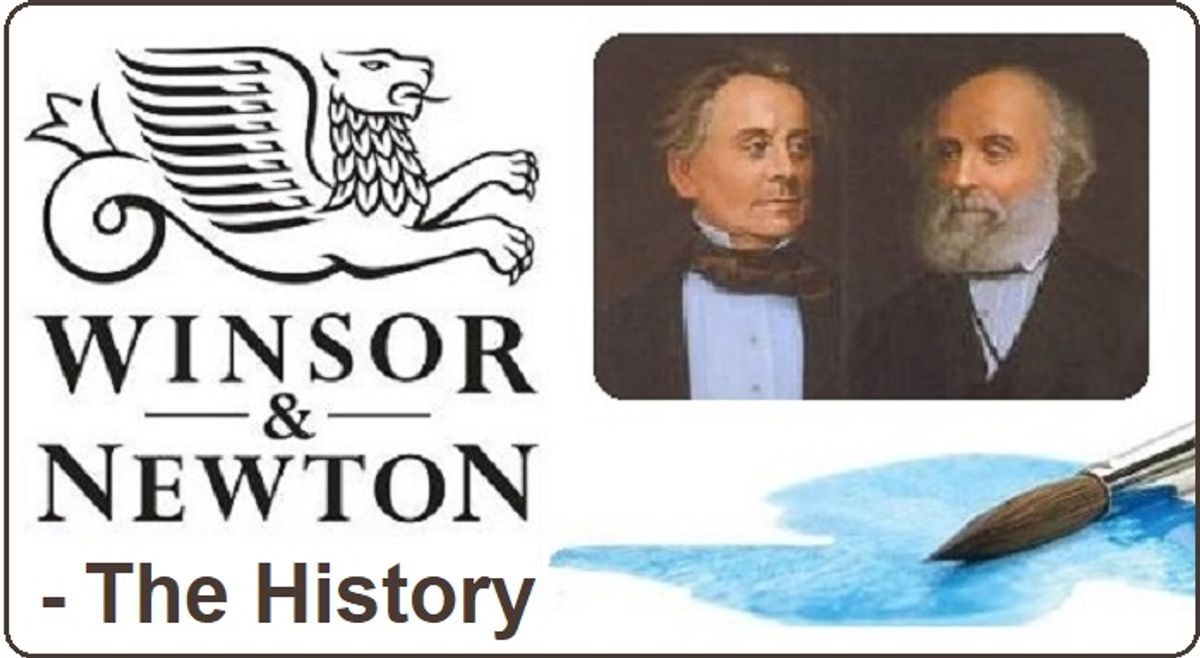
Winsor and Newton founded their business in 1832, at a time of extreme social and cultural change in Britain. The Industrial Revolution was fully fledged and was therefore generating an explosion of technology and trade from all over the world, enabling new materials to be brought into England. With their aim of providing the best choice of pigments with the highest permanence possible, Winsor and Newton were able to take full advantage of the opportunities that were opening up to them and within a couple of decades had introduced many new pigments and colour ranges.
The Chemist & The Artist
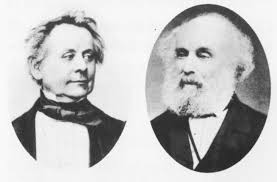
From left: William Winsor & Henry Newton
1832 William Winsor, a chemist, and Henry Newton, an artist, established their partnership at 38 Rathbone Place, London. This was Henry's home, which was then part of an artists' quarter in which a number of eminent painters, including Constable, had studios, and where other colourmen were already established.
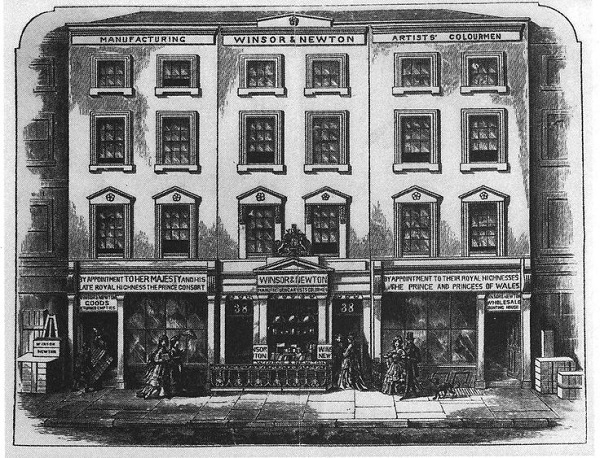
Rathbone Place, London
The World's First Moist Water Colour Pan
1835 Winsor and Newton developed the first moist water colours utilising the moisture-retaining properties of a recently discovered material, glycerine. The new water colour pans were much simpler and more convenient to use than water colour cakes and quickly earned well-deserved popularity. Artists such as Turner were now able to paint outdoors prolifically in water colour.
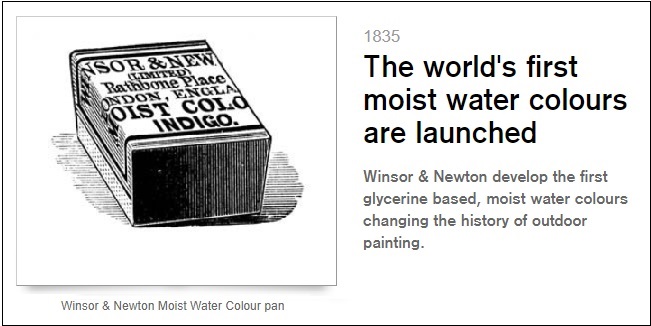
The world's first moist water colour pans
William Winsor Introduces Glass Syringes
1840 William Winsor introduced glass syringes to replace bladders as oil colour containers.
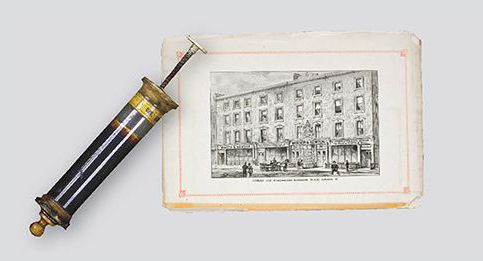
Winsor introduced glass syringes as oil colour containers
Queen Victoria Issues Royal Warrant
1841 Royal recognition came early for Winsor and Newton in the form of appointment as artists' colourmen to Queen Victoria, and the issuing of the Royal Warrant.
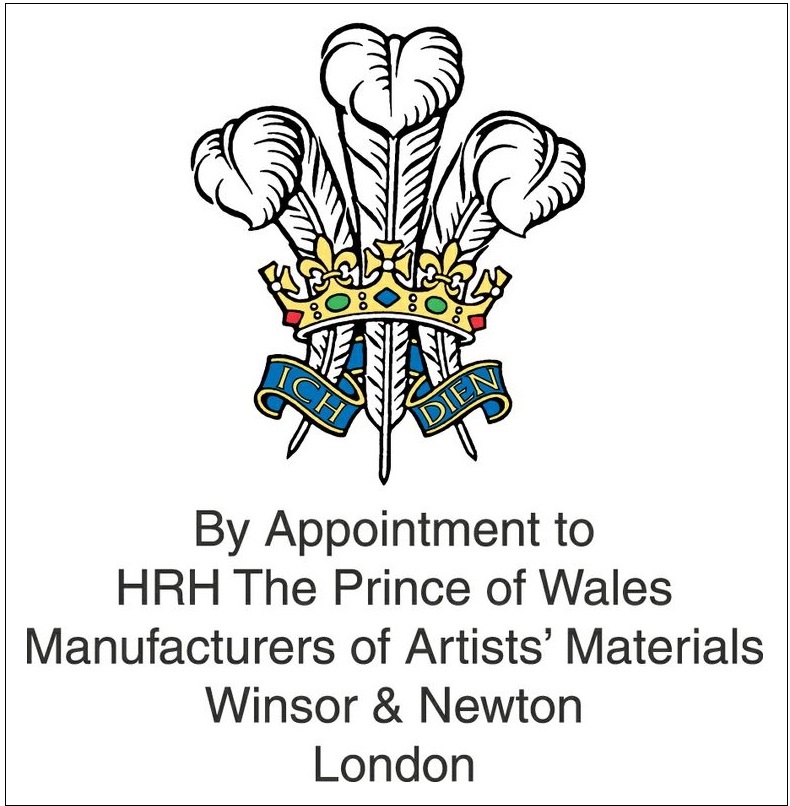
Queen Victoria issued the Royal Warrant of Appointment to Winsor & Newton
William Winsor Patents the First Screw Cap Mechanism for Collapsible Tube
1842 William Winsor patented the first screw cap mechanism for a collapsible metal tube. Following this invention, tin tubes were very quickly accepted as containers for oil colours and a few years later Winsor and Newton were able to uniquely offer moist water colours in tubes. This has become the standard container for colour.
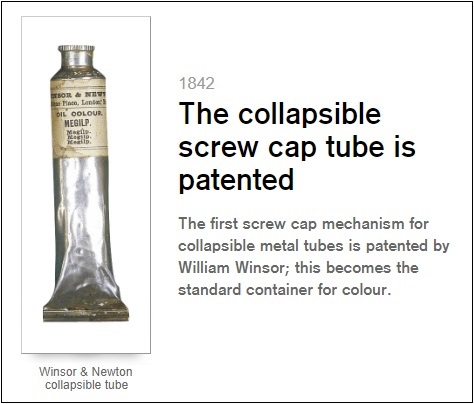
The collapsible screw cap tube
Artist Pierre-Auguste Renoir is quoted as saying that, "Without paint in tubes there would have been…nothing of what the journalists were later to call Impressionists." Winsor & Newton’s own William Winsor patented a particular iteration of the tube which significantly impacted upon artists’ use of colour.
These revolutionary artists including Claude Monet headed outside to paint ‘en plein air’ in order to ‘capture the snapshot’, thus celebrating the everyday and changing the art world forever. The portability of paint tubes was integral to such practices.
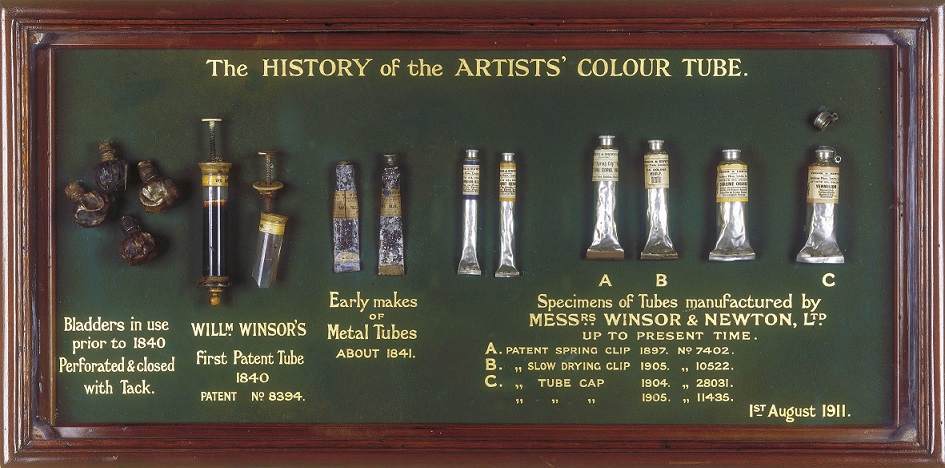
The history of artists' colour tube
Recognition and Awards
High-quality products together with the prestige of royal appointments and awards at international exhibitions helped to stimulate trade for Winsor and Newton overseas'. During the second half of the nineteenth century there was hardly any competition in the manufacture of artists' materials in non-European countries and this doubtless encouraged ever-increasing exports to the U.S.A. and also India and Australia.
1851 Winsor and Newton exhibited at The Great Exhibition in the Crystal Palace and were awarded the only prize medal open to competitors for artists' colours. This was the first of many successful exhibits in numerous International Exhibitions, including the Chicago World Exhibition in 1893, where Winsor and Newton were awarded the medallion for the development of permanent artists' colours.
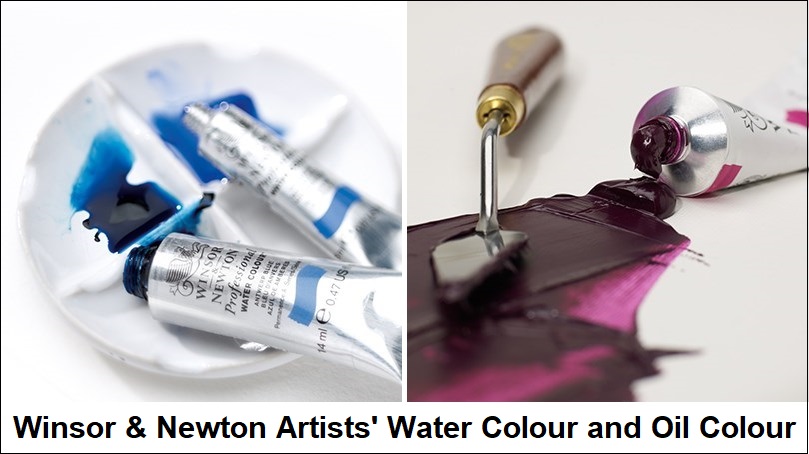
Winsor & Newton artists' colours
The Series 7 Brush Is Created for Queen Victoria
1866 The Series 7 brush was created. Queen Victoria ordered Winsor & Newton to produce the very finest kolinsky sable water colour brushes in her favourite size: the No. 7.
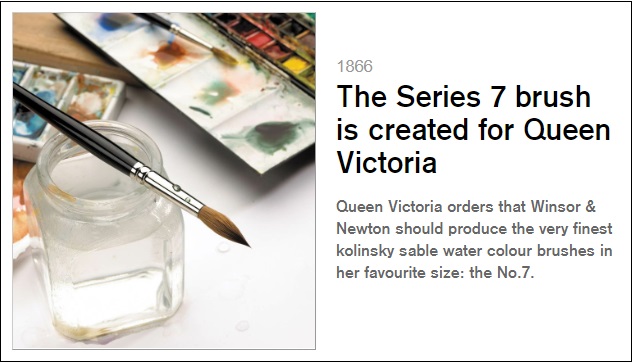
The Series 7 Kolinsky Sable Brush
Winsor & Newton Ltd Is Incorporated
1881 A few months before the death of Henry Newton in 1882, Newton sold the business to the newly incorporated firm of Winsor and Newton Ltd which included members of both families amongst the shareholders, with Newtons employed until the 1970's.

Winsor & Newton Ltd was incorporated
The First Company to Publish Composition and Permanence of Artists' Colours
1892 The Composition and Permanence of Artists' Colours first published. Wholly dedicated to ensuring artists used the most stable and permanent pigments, Winsor and Newton were the first artists' colourmen to publish the composition and permanence of their colours.
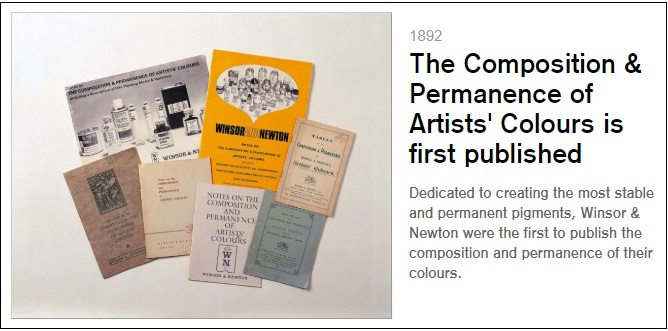
Winsor & Newton were the first to publish the composition and permanence of colours
Student Quality Products and the Launching of Designers' Gouache
By the 1930's the conditions of economic depression had had a very serious effect on the volume of trade both at home and overseas, and directors of the firm decided to compensate for this by making and selling colours of students' quality. Innovation continued throughout the decade, however, and in 1937, Designers Gouache was introduced, a highly pigmented opaque water colour. It became the most popular medium used by graphic designers and also allowed fine artists to use body colour in water colour without having to add white to ordinary water colour.
1937 Winsor and Newton develop student quality products and launch Designers' Gouache.
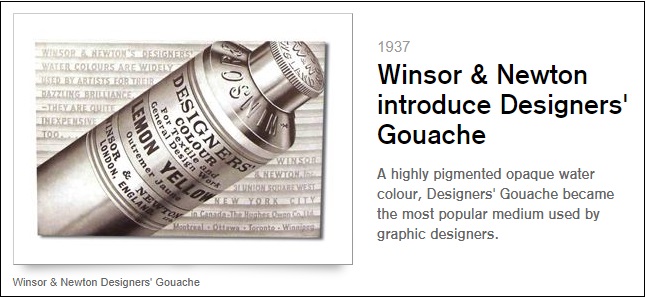
Winsor & Newton introduced Designers' Gouache in 1937
In spite of the austerity of the post war years, the social changes of the 70s and recession of the 80s, Winsor and Newton maintained a strong manufacturing base and were able to proudly develop two completely new types of colour.
Artists' Acrylic Is Launched
1970 Winsor and Newton introduced their first range of Artists' Acrylics, a revolutionary water based paint, which has subsequently become as popular as oil colour.

Winsor & Newton launched Artists' Acrylic in 1970
The First Alkyd for Artists Is Introduced
1976 The first alkyd colour for artists was introduced by the company. This fast drying oil colour range enabled outdoor artists and designers to complete oil paintings in a fraction of the time required with conventional oils.

Winsor & Newton launched the world's first artists' alkyd oil colour
New Colours Are Added
By the 1990s there were so many new organic pigments available that Winsor and Newton embarked on some far reaching reviews to ensure artists would be able to enjoy everything from entirely new colours to greater brilliance and permanence. Almost 200 new colours were introduced over the following 15 years and this process is still continuing today.
1996 Winsor and Newton embarked on the most significant change to the Artists' Water Colour range in 164 years. The availability of so many new pigments meant that 35 new colours were introduced into the range, offering artists the widest and most balanced spectrum with the greatest permanence.

35 new colours were added to the Artists' Water Colour range in 1996
Water Mixable Oil Colour Is Launched
1998 Winsor and Newton revealed the results of a long research project to supply a range of both colours and mediums in oil which could be thinned and cleaned up with water. This range named as Artisan Water Mixable Oil Colour allowed an enormous number of artists to enjoy oil colour without the use of hazardous solvents.
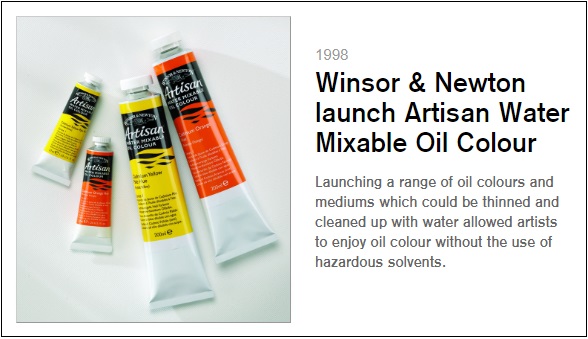
Winsor & Newton launched Artisan Water Mixable Oil Colour in 1998
2007 Winsor and Newton celebrated 175 years of colour making.
(Sources: Winsor & Newton, Grace's Guide)
